Thingiverse

Respirator Mask - Removable filter by LuNdreu
by Thingiverse
Last crawled date: 4 years, 1 month ago
WARNING: This is not meant to guarantee full protection against COVID-19 since the filter to be installed is up to the owner. Remember that effective filters are FFP3.
The mask is aimed to stop the public from mass purchase of masks that shall be reserved to medical staff.
Items required:
Sealing strip (foam like - neoprene) / Suggested thickness 10 mm
Chin piece L = 14cm
Face piece L = 23.5cm
I designed with a quite large space on the nose area and without a bottom layer in order to adapt to most of the faces. The one in the picture is printed in PLA (I would suggest to try TPU as well).
I used thin silicone windows seals (5 x 5 mm) and already with this the sealing is perfect. If I close the front opening with hands it is basically impossible to breath.
By using a thicker foam strip I believe that optimal sealing can be achieved on most of the faces.
Print it and any suggestion is welcome.
Remember: Print it for you, your friends and whoever and do stop buying professional masks. Medical staff seriously needs them.
PS. I suggest to print is as in the picture since that orientation requires minimum supports.
If you need the sliced file, text me.
EDIT 23.03.2020
Filter cap added.
Depending on the printer settings and precision, the cap the be just clicked in/out or (if it's loose) clockwise rotated for plug-in (end stroke present). I suggest a thick filter that will guarantee a better sealing and will make the click-in enough.
EDIT 25.03.2020
Added inner neoprene sealing band 10mm x 10mm. The sealing level with the face is perfect and comfort increased. Working on some effective filters alternative at the moment. Will keep you posted.
EDIT 26.03.2020
Created one-page website to ease distribution.https://3dsprint.wixsite.com/printable-respirator
EDIT 27.03.2020
Chin area modified to better adapt to different faces. Already tested on male/female faces of different sizes. Print it, test it, leave a feedback on the website comment area! Thank you for contributing to the development.
EDIT 29.03.2020
Added YouTube tutorial on website to guide people through correct assembly)
EDIT 31.03.2020
Reduced thickness to 1.2mm (3 printing layers for optimal elasticity on the sides without compromising filling) - Print time reduced by 1h (with 0.4mm nozzle)
Slightly increase of front intake area.
EDIT 02.04.2020
Added Filter_Cap_Angle with inclined inflow channels.
If you are using a HEPA filter or a piece of cotton, I suggest to use the file Filter_Cap_Angle.
The slots for air intake are inclined in order to deviate the intake velocity of the flow.
In this way air is forced to enter with an intake angle in the filtering media (rather than perpendicularly) crossing more useful filter volume and helping filtration by diffusion.
It won't make it become a super effective filter and it's a free contribution.
Other advantage is that the projected surface exposed to drops (if someone is in front of you) is virtually 0 (remember that ideally you want a DYI mask to be a shield more than a filter).
Breathability is not affected since total intake area is similar to the other version.
NOTE: Many DYI masks present a wide intake area in order to reduce the pressure drop and increase the filter efficacy.
This makes sense for high level filters, such as FFP3/FFP2 which need to have a wide intake surface (the whole mask) since they capture the virus particles by different mechanics (such as interception and impaction) which are badly influenced by pressure drops.
These 3D printed masks or dyi masks won't probably have that type of filter, but rather some cottons, fabrics or best case HEPA. Considering this last case (best solution), a standard one has a good filtration level with airflow up to 100 times the one of human breath. Moreover HEPA filters show a certain efficacy against viruses since they filter by diffusion which is a different mechanics, effective especially with low airflow (such as human breath).
This is the reason why for 3D printed masks with homemade filters (to be used as last resort instead of pieces of clothes) I believe it is a better approach to keep the intake area as small as possible (always taking into account the ratio with the nose intake area).
I see a 3D printed mask with homemade filters primarily as a shield and only secondarily as a low efficacy respiratory filter.
The mask is aimed to stop the public from mass purchase of masks that shall be reserved to medical staff.
Items required:
Sealing strip (foam like - neoprene) / Suggested thickness 10 mm
Chin piece L = 14cm
Face piece L = 23.5cm
I designed with a quite large space on the nose area and without a bottom layer in order to adapt to most of the faces. The one in the picture is printed in PLA (I would suggest to try TPU as well).
I used thin silicone windows seals (5 x 5 mm) and already with this the sealing is perfect. If I close the front opening with hands it is basically impossible to breath.
By using a thicker foam strip I believe that optimal sealing can be achieved on most of the faces.
Print it and any suggestion is welcome.
Remember: Print it for you, your friends and whoever and do stop buying professional masks. Medical staff seriously needs them.
PS. I suggest to print is as in the picture since that orientation requires minimum supports.
If you need the sliced file, text me.
EDIT 23.03.2020
Filter cap added.
Depending on the printer settings and precision, the cap the be just clicked in/out or (if it's loose) clockwise rotated for plug-in (end stroke present). I suggest a thick filter that will guarantee a better sealing and will make the click-in enough.
EDIT 25.03.2020
Added inner neoprene sealing band 10mm x 10mm. The sealing level with the face is perfect and comfort increased. Working on some effective filters alternative at the moment. Will keep you posted.
EDIT 26.03.2020
Created one-page website to ease distribution.https://3dsprint.wixsite.com/printable-respirator
EDIT 27.03.2020
Chin area modified to better adapt to different faces. Already tested on male/female faces of different sizes. Print it, test it, leave a feedback on the website comment area! Thank you for contributing to the development.
EDIT 29.03.2020
Added YouTube tutorial on website to guide people through correct assembly)
EDIT 31.03.2020
Reduced thickness to 1.2mm (3 printing layers for optimal elasticity on the sides without compromising filling) - Print time reduced by 1h (with 0.4mm nozzle)
Slightly increase of front intake area.
EDIT 02.04.2020
Added Filter_Cap_Angle with inclined inflow channels.
If you are using a HEPA filter or a piece of cotton, I suggest to use the file Filter_Cap_Angle.
The slots for air intake are inclined in order to deviate the intake velocity of the flow.
In this way air is forced to enter with an intake angle in the filtering media (rather than perpendicularly) crossing more useful filter volume and helping filtration by diffusion.
It won't make it become a super effective filter and it's a free contribution.
Other advantage is that the projected surface exposed to drops (if someone is in front of you) is virtually 0 (remember that ideally you want a DYI mask to be a shield more than a filter).
Breathability is not affected since total intake area is similar to the other version.
NOTE: Many DYI masks present a wide intake area in order to reduce the pressure drop and increase the filter efficacy.
This makes sense for high level filters, such as FFP3/FFP2 which need to have a wide intake surface (the whole mask) since they capture the virus particles by different mechanics (such as interception and impaction) which are badly influenced by pressure drops.
These 3D printed masks or dyi masks won't probably have that type of filter, but rather some cottons, fabrics or best case HEPA. Considering this last case (best solution), a standard one has a good filtration level with airflow up to 100 times the one of human breath. Moreover HEPA filters show a certain efficacy against viruses since they filter by diffusion which is a different mechanics, effective especially with low airflow (such as human breath).
This is the reason why for 3D printed masks with homemade filters (to be used as last resort instead of pieces of clothes) I believe it is a better approach to keep the intake area as small as possible (always taking into account the ratio with the nose intake area).
I see a 3D printed mask with homemade filters primarily as a shield and only secondarily as a low efficacy respiratory filter.
Similar models
grabcad
free
![[NEOPMask] - Printable respirator with exchangeable filter [COVID-19 Aid]](/t/5684792.jpg)
[NEOPMask] - Printable respirator with exchangeable filter [COVID-19 Aid]
...breathability is not affected since total intake area is similar to the other version. edit 06.04.2020 filter_cap_angle (see above)...
thingiverse
free

Turn ventilation mask to a filtration mask by Klingman
...to breath.
your first instinct will be to take dep breathes you should try to stop yourself and breath throw the nose and slowly.
thingiverse
free

HOME Filter Modular Mask no Supports n95 HEPA MERV by vendevil
...4256265
coming improvements
flexible printed seal
better moisture protection for the intake
desiccant holder in the breath guard
thingiverse
free

HEPA Covid Coronavirus Face Mask
...e frame.
the filter we used on the picture, is from a car air filter! we recommend that you use the best filter available to you.
thingiverse
free

Filtration Mask (TPU) by 3dmpro
...thie mask should only be printed using tpu or similar soft, strong, and elastic filaments. rigid filaments are more...
thingiverse
free

Deluxe Coffee Filter Face Mask by cglightNingART
...ide of "part 6" to the front and the open side backwards. (hope you understand, what i mean ;) )
enjoy your face mask
thingiverse
free

NewProkuror by NewProkuror
... newprokuror
thingiverse
adapters for full face diving mask and hepa filter by newprokuror
for filters with different diameters.
thingiverse
free

FACEMASK ANTIVIRUS by ETTGR
...void any responsibility due to a bad use of the product.
to know which face-mask to use, please refer to you country regulations.
thingiverse
free

Happy Face Powered Face Mask by jpickens
...lled into the holes in the intake cylinder to mount it in place.
video of happy face mask in action:
https://youtu.be/bpcbwspdacm
grabcad
free

make the mask remix
... reduce a little weight. take in mind my modifications are not tested in the manner the official one is. im open to suggestions.
Lundreu
thingiverse
free
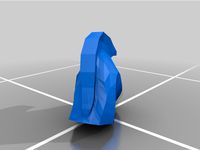
Low Poly Zebra Head by LuNdreu
...artoon style low poly zebra head.
for the complete model, you can check:
https://cults3d.com/en/3d-model/art/low-poly-zebra-ndreu
thingiverse
free

Respirator Ear Clip by LuNdreu
...ut at:
https://www.thingiverse.com/thing:4236248
or
https://3dsprint.wixsite.com/printable-respirator
thank you from your ears ;)
thingiverse
free

GoPro Bracket for Julius K9 Power Harness by LuNdreu
...tolerances so you can print even with draft quality and it will fit pretty good.
enjoy your trip and let your dog film for you :)
thingiverse
free

GoPro Bracket for Julius K9 Power Harness by LuNdreu
...tolerances so you can print even with draft quality and it will fit pretty good.
enjoy your trip and let your dog film for you :)
thingiverse
free

Bio-hazard Grill for Respirator Mask by bgkast
...by bgkast thingiverse re-mix of the filter cap for lundreu#39;s respirator mask. pro-tip: hepa furnace filters make great material...
grabcad
free

Train your eyes - Pinhole glasses
...it. and if you want to leave a tip: https://ko-fi.com/lundreu ...
Respirator
turbosquid
$21

Gas mask respirator respirator respirator
...irator respirator respirator for download as ma, obj, and fbx on turbosquid: 3d models for games, architecture, videos. (1606334)
3d_export
$7

mask respirator
...mask respirator
3dexport
3d respirator mask
turbosquid
$30

Cartoon medical respirator
... cartoon medical respirator for download as max, fbx, and obj on turbosquid: 3d models for games, architecture, videos. (1667655)
turbosquid
$16

Gas mask respirator
...model 3d gas mask respirator for download as ma, obj, and fbx on turbosquid: 3d models for games, architecture, videos. (1612216)
turbosquid
$21

Gas mask respirator
...or scifi futuristic 3d model for download as ma, fbx, and obj on turbosquid: 3d models for games, architecture, videos. (1609213)
3d_export
$5

3d artificial respirator
...3d artificial respirator
3dexport
artificial ventilator, simple version without back connections
turbosquid
$21

Gas mask respirator scifi
...3d model gas mask respirator scifi for download as ma and obj on turbosquid: 3d models for games, architecture, videos. (1605093)
turbosquid
$24

Gas mask respirator helmet
...l gas mask respirator helmet for download as ma, fbx, and obj on turbosquid: 3d models for games, architecture, videos. (1581755)
turbosquid
$23

Gas mask respirator scifi
...el gas mask respirator scifi for download as ma, obj, and fbx on turbosquid: 3d models for games, architecture, videos. (1604278)
turbosquid
$22

Gas mask respirator scifi
...el gas mask respirator scifi for download as ma, obj, and fbx on turbosquid: 3d models for games, architecture, videos. (1605729)
Filter
3d_export
$10
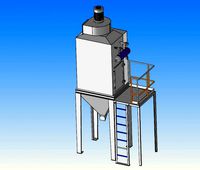
cartridge filter
...cartridge filter
3dexport
cartridge filter
3d_export
$6
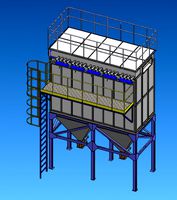
Bag filter
...bag filter
3dexport
bag filter
3d_export
$10

of dust filter
...of dust filter
3dexport
3d model of dust filter
3d_export
$10

of bag filter
...of bag filter
3dexport
3d model of bag filter
3d_export
$7

of bag filter
...of bag filter
3dexport
3d model of bag filter
turbosquid
$20

Filter
...ty free 3d model filter for download as ma, max, obj, and fbx on turbosquid: 3d models for games, architecture, videos. (1512887)
3d_export
$10
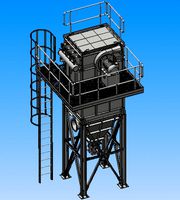
bag filter
...he ash hopper. when the gas containing fine dust passes through the filter material, the dust is retained and the gas is purified
3ddd
$1

UFI Filter
...ufi filter
3ddd
фильтр , ufi
ufi oil filter
turbosquid
$30

Filter
... available on turbo squid, the world's leading provider of digital 3d models for visualization, films, television, and games.
turbosquid
$5

filters
... available on turbo squid, the world's leading provider of digital 3d models for visualization, films, television, and games.
Mask
turbosquid
$1

Dust Mask Medical Mask Face Mask Surgical Mask
...k face mask surgical mask for download as blend, fbx, and obj on turbosquid: 3d models for games, architecture, videos. (1533329)
3d_export
$5
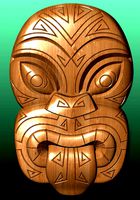
Mask
...mask
3dexport
african mask
turbosquid
$2
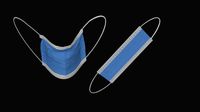
Riggged Surgical mask face mask dust mask medical mask
...sk dust mask medical mask for download as blend, fbx, and obj on turbosquid: 3d models for games, architecture, videos. (1536257)
archibase_planet
free

Mask
...mask
archibase planet
mask sculpture decor
mask - 3d model for interior 3d visualization.
3d_export
$19
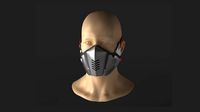
masks tech metal masks wearable futuristic masks
... tech metal masks wearable futuristic masks
3dexport
masks, tech metal masks, wearable, futuristic masks zip contain fbx obj max
archibase_planet
free
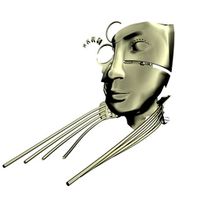
Mask
...mask
archibase planet
mask sculpture decor
mask-decor - 3d model for interior 3d visualization.
archibase_planet
free
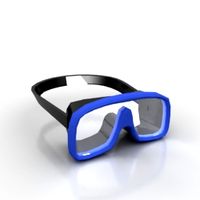
Mask
...mask
archibase planet
mask
swimming mask - 3d model (*.gsm+*.3ds) for interior 3d visualization.
archibase_planet
free

Mask
...mask
archibase planet
picturesque element mask
mask n050608 - 3d model (*.gsm+*.3ds) for interior 3d visualization.
archibase_planet
free
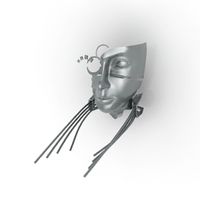
Mask
...mask
archibase planet
mask picturesque element
mask n230708 - 3d model (*.gsm+*.3ds) for interior 3d visualization.
archibase_planet
free
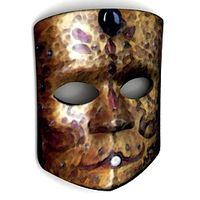
Mask
...mask
archibase planet
mask ornament decoration
mask decor n240211 - 3d model (*.gsm+*.3ds) for interior 3d visualization.
Removable
turbosquid
$15

Staple Remover
... available on turbo squid, the world's leading provider of digital 3d models for visualization, films, television, and games.
turbosquid
$10

Staple Remover
... available on turbo squid, the world's leading provider of digital 3d models for visualization, films, television, and games.
turbosquid
$1

Staple Remover
... available on turbo squid, the world's leading provider of digital 3d models for visualization, films, television, and games.
3d_export
$25

Staple Remover 3D Model
...remover office supplies pull desk paper remove workplace school work desktop vray
staple remover 3d model plutonius 7699 3dexport
turbosquid
$28

Removable Wall Hatch
... 3d model removable wall hatch for download as , fbx, and obj on turbosquid: 3d models for games, architecture, videos. (1670326)
3d_export
$15

Staple Remover 3D Model
... desktop paper accessories household tool desk workplace instrument equipment pull
staple remover 3d model firdz3d 90012 3dexport
3ddd
free
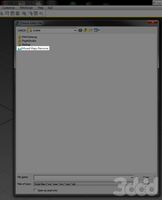
Missed Maps Remover
...
3ddd
missed maps remover
скрипт находит потерянные карты в файле и позволяет удалить их или открыть в окне редактора материалов.
turbosquid
$29

Eye remover
...bosquid
royalty free 3d model eyeremover for download as 3dm on turbosquid: 3d models for games, architecture, videos. (1695439)
3ddd
$1

Remove Note Track
...аем скрипт чтобы удалить нулевые треки,которые грузят систему при сохранении и файл начинает сохраняться снова нормально и быстро
3d_export
$6

Gas dust removal bag filter
...gas dust removal bag filter
3dexport
gas dust removal, bag filter
